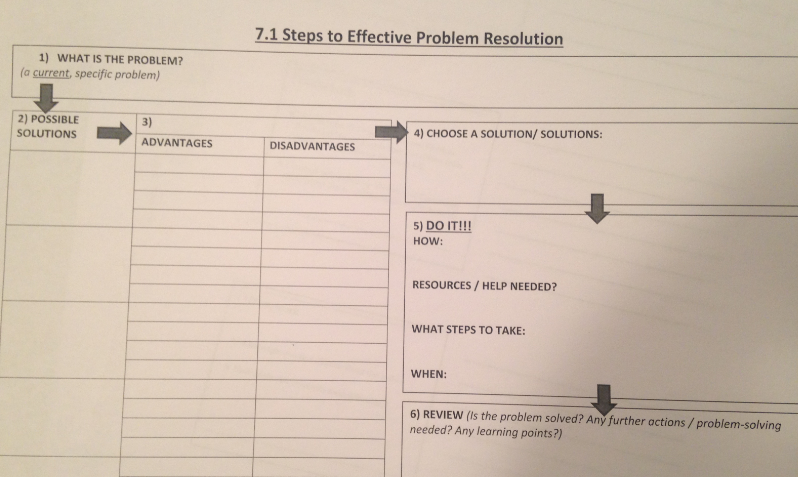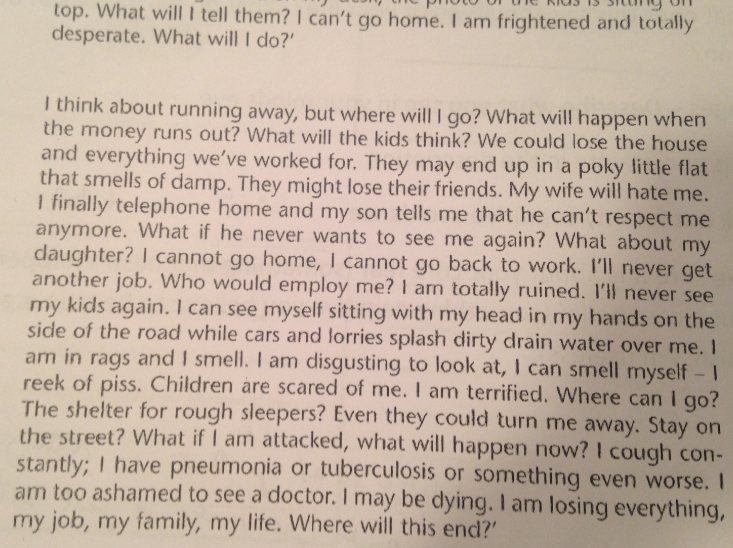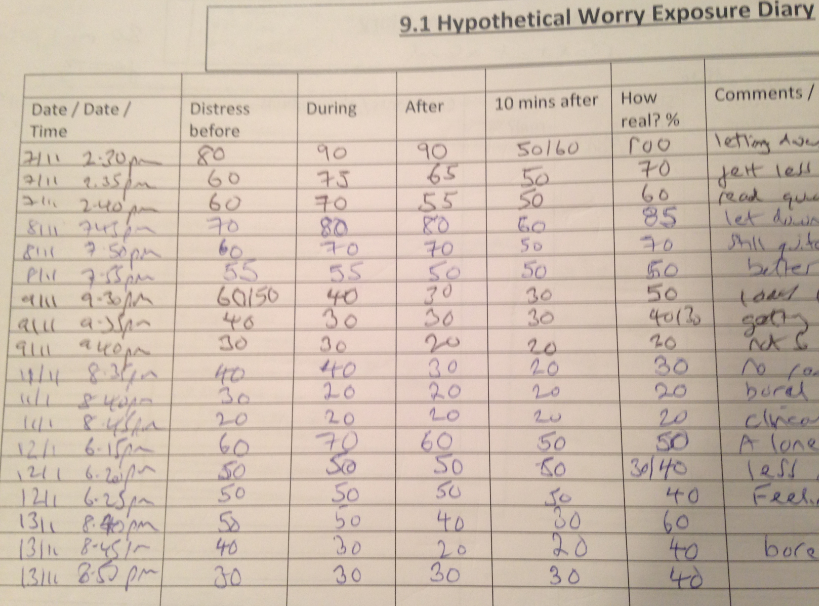|
So we'd done a lot of intro, a lot of understanding about worry, what it is, how it affects you and we now started to focus more on what you can do about it. Week 6 - Problem Solving Pt 1 - Problem Orientation You can work to solve current problems, but not hypothetical ones. It's better to solve a problem than worry about it. Makes sense. First we started off seeing is we could switch around the negative problem orientation that people with generalised anxiety tend to have. We tend to view problems as threatening, doubt our ability to solve them and believe our problem solving won't work. All this combined affects how we feel about the problem, how we think about it and how we behave towards it. so what to do:
Week 7 - Problem Solving Part 2 So we were good at spotting problems and last weeks homework was to spot recurring problems in our lives and record them. So how to solve them.....Well the approach was to use a 6 step process. A process was necessary because when you're anxious you can feel like you aren't good at problem solving, try and solve too many problems, produce vague solutions and make ourselves feel a lot worse. Strangely perhaps I think I'm good at problem solving.
Week 8 - Processing core fears (part 1) It was no surprise to hear that we worry about things that are important to us and can fluctuate between worrying about these and avoiding worrying about them. Everyone has these things in their life that are important, they might be about relationships, health, aspirations, values, work. These are the heart of your worry. With these we often have hypothetical 'what if' worries and tend to choose 2 main techniques to deal with them, neither of which actually work, these are:
You can suppress it, distract yourself, try and avoid thinking about it, avoid situations, reassure yourself but none of that makes it go away. That's a nice black bear huh. Nice snout, lovely eyes, big alert ears, powerful jaw, thick fur. Strong bear, powerful, deep roar, hot breath. Majestic, Scarey. Big Black Bear. Now close your eyes and try not to think about that black bear for one minute. Bet you can't. ........ Avoidance doesn't work, unless perhaps you're a mindfulness black bear, i mean belt. We never build up any tolerance to hypothetical worry if we never face it and don't expose ourselves to it. Bearing in mind that only 10% of hypothetical worries come true that means we spend a lot of time and effort on them and should invest it somewhere more productive. For homework we had to write about a hypothetical worry situation. In detail, with smells, sights and sounds, describing what we were doing and how it felt, describing the images in detail, not avoiding the situation and making it about a core fear. This is part of the example we were given. It was tough enough reading that. Homework wasn't going to be fun. Week 9 - Processing core fears (part 2) Week 9 was tough. We'd been building up to week 9, we just didn't know it. We looked over hypothetical worry scenarios, we didn't share, we mostly sat and read them in silence. We made sure they covered all senses, that they didn't include avoidance or neutralisation. The trainers explained about SUDS, which I was quite excited about because I'm a big fan of sustainable urban drainage, but unfortunately these SUDS were Subjective Units of Distress. This really wasn't going to be fun. We individually read through our scripts and recorded our SUDS score before, during and after reading, then ten minutes later. I went and sat on my own to do this, it was horrible, I had written about something deeply personal that I was really worried about, something that was grounded in real life, maybe too grounded. Everyone got quite upset and anxious. We were told that meant the scenario was the right one. Hmmmm. Homework was to read the scenario out loud 3 times every day for a week and record our SUDS and see what happened. These were my scores. 100 is the most anxious / upset, 50 some anxiety but manageable and 0 not feeling anxious at all. So exposure to worry helps how you think about it. This was bloody amazing, and also deeply unpleasant.
We probably talked about no pain no gain here, or I might have made that up. I'm going to do a part 3 to this thread, as just remembering the hypothetical worry exposure is enough for today Take care Paul
0 Comments
Your comment will be posted after it is approved.
Leave a Reply. |
AuthorMr Paul Wyse Archives
January 2021
|






 RSS Feed
RSS Feed
